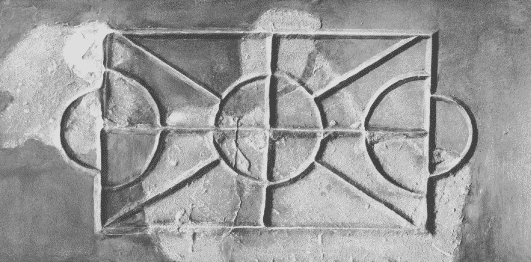
1. Probable Bear game inscribed on a sandstone plate (3rd century Roman) (Repr. approved by Augusta Raurica, photograph by Ursi Schild.)

In this traditional form of hunt game three hunters are following a bear, trying to enclose it. Pieces can move to an adjacent intersection following the lines. The three white pieces must try to stalemate the black piece. The hunter party can always win, but it is a sophisticated game which often can take as many moves as a chess game. Neither side can capture.
The Bear game (Bear hunt), is still known among elderly people in Piemonte, Italy, where it is found among rock carvings. U. Schädler has proposed that bear games could have their origin in the Roman era. This idea builds on the rectangular diagrams (see figures) that have been found in Augst, Switzerland, and which date back to the third century. These are likely to be Bear game boards, especially since they function so finely when tested. I hypothesize that the Romans viewed the board as an arena with three Bestiarii gladiators fighting a bear, a common spectacle in the Roman era.
The difficulty of the game makes it a challenge to survive as long as possible with the bear. One can set a limit and say that at move forty, for instance, the hunter party must have won, otherwise the bear wins. Presumably this was how it was played, perhaps also involving betting. In this implementation white (the hunter party) only loses if position is repeated three times.
Bear board variants
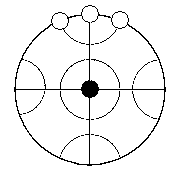
2. Bear game (round), with pieces in a standard initial position. Alternatively, the white pieces were initially placed on the positions surrounding the black piece.
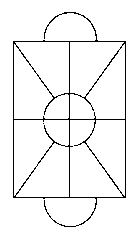
3. Bear game (rectangular 1). It takes the program many moves to win in this particular variant. But it’s easier for the strategical human mind.
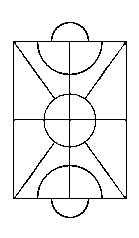
4. Bear game (rectangular 2). A good and interesting game.
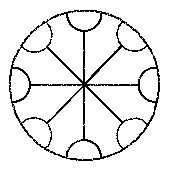
5. Roman wheel pattern. This is a common typical wheel pattern found in roman archaelogical sites. As a game it is almost trivial.
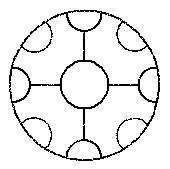
6. This diagram derives from Didyma, Turkey, where it is clumsily depicted in the temple of Apollo.

7. Jeux des gendarmes et du voleur. This good game derives from Sologne, France, where it is still played.

8. Chase the hare. A bear board from Greece (ref. P. Michaelsen or M. Argyriadis).
References
Schädler, Ulrich (2002). ‘Bärenjagd in Augusta Raurica?’ in the Hauszeitschrift 1. Halbjahr 2002. (here)
Depaulis, Thierry & Gavazzi, Carlo (1999). ‘L’orso e i suoi fratelli’, Rivista Biellese, no.4, Oct.1999, pp.46-50.
Many thanks to Peter Michaelsen who has been helpful in providing information.
☛ You can download my free Bear games program here (updated 2009-09-23), but you must own the software Zillions of Games to be able to run it. (I recommend the download version.)
© Mats Winther (May 2008).